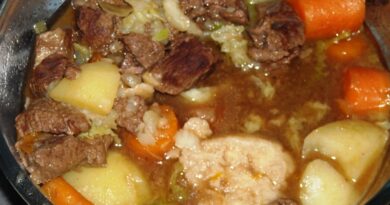Sosatie
The Flavors of Tradition: Exploring the Culinary Artistry of Sosatie
Introduction
South African cuisine is a vibrant tapestry of flavors, reflecting the diverse cultural influences that have shaped the nation. Among the myriad of dishes that capture the essence of South African culinary heritage, sosatie stands out as a flavorful and aromatic masterpiece. This skewered and grilled dish, with its roots deeply embedded in the country’s history, offers a delicious glimpse into the rich tapestry of South African gastronomy.
Origins and Historical Significance
Sosatie finds its origins in the Cape Malay community, an ethnic group with a distinct culture and cuisine that emerged from the historic interaction between the Dutch settlers and the Malaysian, Indonesian, and African populations. The term “sosatie” itself is derived from the Indonesian word “sate,” which refers to skewered and grilled meat.
Historically, sosatie was born out of the need to preserve and flavor meat. The Cape Malay people, well-known for their spice mastery, used a blend of aromatic spices to marinate the meat, not only enhancing its flavor but also acting as a natural preservative in the absence of refrigeration. The unique combination of sweet, sour, and savory flavors in sosatie marinades became a defining characteristic of this dish, setting it apart from other grilled meat traditions.
Ingredients and Marinades
At the heart of every sosatie is the carefully crafted marinade. The key to an authentic sosatie lies in the balance of spices and ingredients that create a harmonious symphony of flavors. Traditional sosatie marinades often include a blend of ingredients such as garlic, ginger, turmeric, coriander, cumin, and a touch of sweetness from apricot jam or fruit chutney. The use of dried fruit, such as apricots or raisins, adds a delightful sweetness that complements the savory meat.
The meat used in sosaties can vary, with lamb and chicken being popular choices. The marinade not only imparts a rich flavor but also tenderizes the meat, resulting in a succulent and juicy final product. The skewers are typically layered with meat, vegetables, and sometimes even fruit, creating a visually appealing and well-balanced dish.
Cultural Significance and Festive Occasions
Sosaties are more than just a culinary delight; they hold cultural significance in South African communities. These skewered delights are often associated with festive occasions and celebrations, bringing people together around the grill to share in the joy of good food and company. Whether it’s a family gathering, a community event, or a holiday celebration, sosaties are a staple on the South African barbecue.
The communal aspect of preparing and enjoying sosaties is deeply ingrained in South African culture. Families and friends gather around the braai (barbecue) to share stories, laughter, and, of course, the delicious skewered delights. The act of marinating and grilling sosaties becomes a shared experience, a culinary tradition passed down through generations.
Regional Variations
While the basic concept of sosatie remains consistent, different regions and communities in South Africa have added their unique twists to the dish. In the Western Cape, for instance, the influence of Cape Malay cuisine is prominent, with an emphasis on aromatic spices and sweet marinades. In contrast, the Northern regions might showcase a more robust and savory profile, reflecting the local preferences for spices and flavors.
Accompaniments and Serving Styles
Sosaties are often served with a variety of accompaniments that further enhance the dining experience. A common side dish is “sambals,” which are fresh and spicy relishes made with ingredients like tomatoes, onions, and chilies. The contrast of the vibrant sambals against the rich flavors of the sosaties adds a delightful complexity to the meal.
In some regions, sosaties are served with traditional South African sides like “mieliepap” (maize porridge) or “roosterkoek” (grilled bread rolls). These accompaniments not only complement the skewered meat but also offer a complete and satisfying meal.
Modern Interpretations and Culinary Innovation
As South African cuisine continues to evolve, sosatie has found its way into modern interpretations and culinary innovations. Chefs and home cooks alike experiment with different meats, marinades, and presentations, pushing the boundaries of tradition while still honoring the essence of sosatie.
Some contemporary variations might include seafood sosaties with a zesty citrus marinade or vegetarian sosaties featuring a medley of grilled vegetables. These creative adaptations showcase the versatility of sosatie as a culinary canvas that can be tailored to suit various tastes and dietary preferences.
Conclusion
Sosatie is more than just a dish; it is a journey through South Africa’s culinary history and cultural diversity. From its humble beginnings in the Cape Malay community to its prominence on the modern barbecue grill, sosatie has stood the test of time, weaving its way into the hearts and palates of the nation.
As we savor the succulent bites of skewered meat, we are not just indulging in a meal but partaking in a celebration of tradition, community, and the artistry of South African flavors. So, the next time you gather around the grill with loved ones, consider adding the tantalizing taste of sosatie to your culinary repertoire – a flavorful homage to the rich tapestry of South African cuisine.



